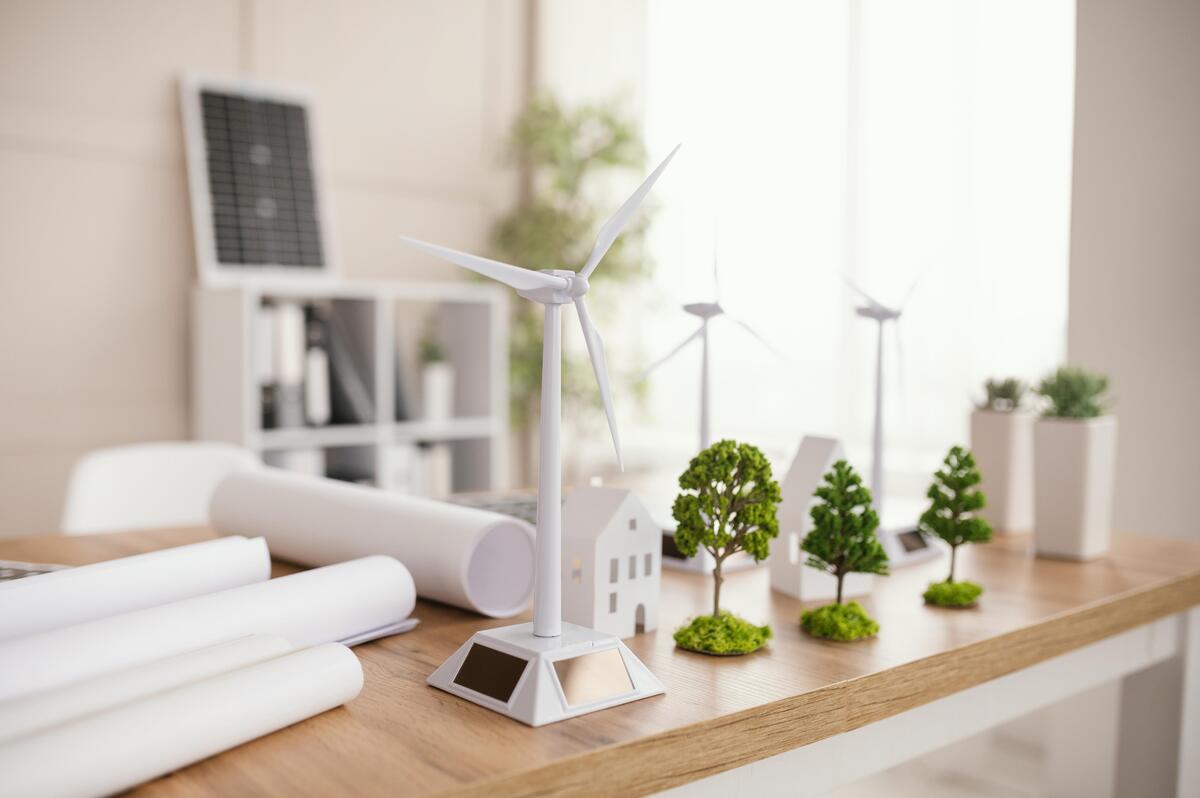The conference’s emphasis on the building sector’s critical role in climate change mitigation makes COP29 a landmark event for sustainable construction. To reach international climate targets, the building industry, which contributes significantly to global emissions, must adjust to more stringent sustainability criteria. COP29 and sustainable construction will raise awareness of how construction can support carbon reduction, green building techniques, and novel materials in order to meet net-zero targets.
Low-carbon building materials, energy-efficient design, and the significance of circular economy concepts are expected to be the most talked-about topics. It is anticipated that COP29 will offer precise guidelines, monetary rewards, and global frameworks that push construction firms toward more environmentally friendly operations as stakeholders unite to address the environmental effect of the sector. For industry experts looking to satisfy market needs and regulatory requirements while promoting a more resilient, low-carbon future, these lessons will be essential.
Table of Contents
The Impact of COP29 and Sustainable Construction
The significance of the building sector in international climate initiatives will be highlighted at COP29. Sustainability must be given top priority in the built environment since it accounts for more than 30% of global greenhouse gas emissions. Reducing material waste, implementing greener construction methods, and minimizing the carbon footprint throughout the course of a building’s lifecycle are some of the major issues that are anticipated to surface.
Benefits of Sustainable Construction Post-COP29
Putting COP29’s proposals into practice has several advantages:
- Enhanced Property Value: Buyers and tenants find sustainable buildings more appealing, which frequently results in a greater market value.
- Savings: Sustainable structures save long-term operating costs, even though their original costs may be higher.
- Employment Creation: The move to environmentally friendly building practices creates opportunities in green industries like recycling and renewable energy.
- Healthier Buildings: Using non-toxic materials and enhancing indoor air quality promotes well-being.

Renewable Energy Integration in Building Design
It is probable that COP29 will place a strong emphasis on incorporating renewable energy sources into building projects. Building designers are urged to include the following in their designs:
- Wind Turbines: Particularly suitable for high-rise buildings or areas with consistent wind patterns.
- Solar Panels: Using integrated and rooftop solar panels to provide clean energy.
- Geothermal Systems: Effective heating and cooling by using the earth’s inherent heat.
By lowering operating carbon emissions, these renewables improve building energy efficiency and save long-term energy expenses.
Green Building Certifications and Standards
Green certifications are becoming more important as sustainability gains traction. COP29 will emphasize following guidelines like:
- BREEAM (Building Research Establishment Environmental Assessment Method): Promotes sustainable construction practices with a focus on long-term environmental advantages.
- LEED (Leadership in Energy and Environmental Design): A world-wide certification supporting energy efficiency, water conservation, and sustainable site development.
- EDGE (Excellence in Design for Greater Efficiencies): Customized for emerging markets, it stresses resource efficiency in construction.
Anticipate that in order to promote sustainable building practices worldwide, COP29 will suggest incorporating these certificates into national and regional laws.
Focus on Low-Carbon Materials
The move to low-carbon building materials is one of the main lessons learned at COP29. Conventional materials that emit a lot of carbon include steel and concrete. Discussions at COP29 will probably promote substitutes like:
- Carbon-Neutral Cement: Cement innovations that absorb CO₂ while it cures are becoming more and more popular.
- Cross-Laminated Timber (CLT): A less carbon-intensive and sustainable substitute for conventional materials.
- Recycled and Reusable Materials: Using recycled materials in buildings minimizes environmental harm and lowers the need for raw materials.
In order to guarantee sustainability from manufacturing to disposal, the emphasis will be on lifespan assessments of materials.

Suggested article to read: Top 7 Reusable Materials in Construction; 2024 Review
Building Energy Efficiency and Retrofitting
Another important topic at COP29 will be retrofitting existing buildings to increase energy efficiency. Retrofitting is a workable way to lower emissions because many existing structures lack contemporary energy-efficient systems:
- Insulation Upgrades: Improving insulation can drastically lower the need for heating and cooling.
- Integration of Smart Technology: Energy usage can be optimized by integrating smart HVAC, lighting, and energy management systems.
- Window Upgrades: Double or triple-glazed windows can assist regulate the temperature inside buildings.
COP29 will prioritize retrofitting in order to satisfy new energy standards and increase the useful life of existing buildings.
The Circular Economy’s Contribution to Sustainable Building
The application of circular economy concepts in the building sector will be a central issue at COP29. This includes:
- Designing for Deconstruction: Guaranteeing that materials can be easily taken apart and reused.
- Waste Minimization: Cutting down on waste on-site by improving off-site prefabrication and material planning.
- Reusing and Recycling: Including recycling into every step of the building process, from design to completion.
The goal will be to develop closed-loop systems that minimize the requirement for new materials by extending the lifespan of resources.
Policy Rewards for Sustainable Construction
It is anticipated that COP29 will implement or strengthen legislative incentives meant to hasten the transition to sustainable building practices. These could consist of:
- Tax Benefits: For businesses that obtain green certifications or use low-carbon goods.
- Grants and Subsidies: funding for creative sustainability initiatives and studies.
- Public Building Mandates: Public projects must adhere to strict sustainability standards, which encourage the private sector to do the same.
It is probable that frameworks that support the building industry’s shift to more environmentally friendly practices will be agreed upon by governments and international organizations.

The Challenges of Achieving Sustainable Construction Goals
Even though the COP29 directives are clear, there are obstacles in the way of their implementation:
- High Costs of Sustainable Materials: Green materials are still typically more expensive, notwithstanding price reductions.
- Regulatory Compliance: It might be difficult to navigate different local, national, and international requirements.
- Knowledge Gaps: In order to comprehend and use sustainable techniques, many construction professionals need to upskill.
Governments, commercial businesses, and educational institutions must work together to overcome these obstacles.
Conclusion
It is anticipated that COP29’s emphasis on sustainable construction will hasten the sector’s shift to more environmentally friendly methods. The construction industry may greatly lessen its environmental impact by implementing green certifications, using renewable energy, and using low-carbon products. The circular economy, technology developments, and regulatory incentives highlighted at COP29 will help businesses satisfy strict sustainability goals while encouraging innovation.
In addition to reducing the effects of climate change, these actions also guarantee economic sustainability, enhance public health, and provide a resilient built environment. Sustainable construction will become the norm rather than the exception as the construction sector conforms to the conclusions of COP29 and plays a significant role in accomplishing global climate goals. The lessons learned at COP29 will enable professionals to take the lead in creating a more sustainable future, bringing about long-lasting change for both the environment and communities.
FAQs
What is COP29, and why is it relevant to sustainable construction?
- Answer: The 29th climate meeting, COP29, is centered on global climate goals. It draws attention to how resilient building practices can lower emissions.
How will COP29 influence material choices in construction?
- Answer: In order to lessen the environmental impact of the building industry, COP29 is probably going to place a strong emphasis on low-carbon materials like carbon-neutral cement, cross-laminated timber, and recycled steel.
What are the expected benefits of following COP29’s guidelines in the construction industry?
- Answer: Lower operating expenses, healthier living environments, increased property prices, and better adherence to international climate regulations are some advantages.
How can construction companies integrate renewable energy following COP29 directives?
- Answer: For sustainable structures, businesses can investigate wind energy options, install solar panels, and use geothermal systems.
What challenges does the construction industry face in aligning with COP29’s recommendations?
- Answer: The sector must work together to address obstacles including exorbitant costs, knowledge gaps, and complicated regulations.
Suggested article for reading:
Case Study: Top 4 Eco-Friendly Smart Building Construction Projects
The Future of Smart Construction; 2024 Review
Top 23 Famous Women Architects in World; 2024 Review
LCA in Building Materials: 5 Ways to Select Sustainable Options
The Role of PIM in Sustainable Construction (2024)
LCA and Carbon Footprint: 10 Effective Reduction Strategies
The Top 7 Green Architecture Projects
Resources:
- United Nations Framework Convention on Climate Change (UNFCCC) publications.
- McGraw Hill Construction industry analysis.
- Intergovernmental Panel on Climate Change (IPCC) reports.
- LEED and BREEAM certification standards.
- World Green Building Council, guidelines on sustainable construction.
For all the pictures: Freepik





